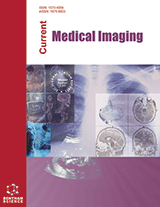
Abstract
Introduction: Follicular Dendritic Cell Sarcomas (FDCS)was first found in 1986; the specificity of the disease is its rarity, with an incidence of only 0.4%, numerous doctors for its lack of understanding, the accuracy of imaging diagnosis is not great, which is easy to delay the treatment. This article summarizes several characteristic imaging manifestations of FDCS to provide imaging physicians with an understanding of the imaging properties of this rare disease. When faced with complex cases, the radiologist can consider this disease and include it in the differential diagnosis. FDCS occurs mainly in lymph nodes, mainly in the head and neck. The main symptoms are fatigue, local pain, or painless mass. The treatment method is not uniform, but scholars agree that we should strive for the opportunity of surgery as much as possible.
Case Presentation: This paper reported a case of FDCS with pelvic recurrence 3 years after surgery. The patient was suspected to have lymphoma by postoperative pathology in the local hospital, and it is recommended that the patient be reexamined regularly. A soft tissue mass was recently found again in the left pelvic cavity. After an enhanced CT examination, the radiologist was skeptical of the previous diagnosis of lymphoma. Subsequently, a needle biopsy was performed at Peking University Shougang Hospital. The pathological results rejected the prior diagnosis of lymphoma after consultation with additional hospitals, and the patient was diagnosed with FDCS.
Conclusions: The imaging manifestations of FDCS lack absolute specificity, but it also has imaging characteristics, such as large areas of necrosis in the huge mass, rough mass calcification in the mass, enhanced scan showed “fast in and slow out” mode, and there were blood vessels in the tumor. FDCS mainly occurs in lymph nodes and is easily misdiagnosed as GIST, inflammatory myoblastoma, lymphoma, etc. Radiologists should continue to collect cases of this disease and include suspected cases in the differential diagnosis in clinical work.
Keywords: Rare diseases, Enhanced CT, Follicular dendritic sarcoma, Needle biopsy, Surgery, Patients.












